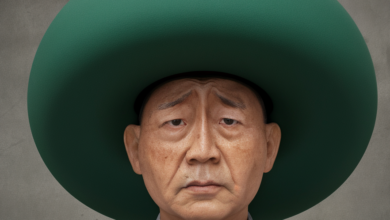
Table of Contents
Origins of the Chinese language
The roots of the Chinese language can be traced back over thousands of years, making it one of the oldest written languages in the world. The development of Chinese characters is closely linked to the evolution of the language itself, with each character symbolizing a concept, idea, or object. This intrinsic connection between language and writing has shaped the unique linguistic landscape of Chinese communication.
Through centuries of historical and cultural evolution, the Chinese language has incorporated various influences, resulting in its complex and nuanced structure. With over 50,000 characters in existence, mastering the Chinese language requires dedication and persistence. Understanding the origins of the Chinese language provides valuable insights into its intricate system of symbols and sounds.
Evolution of Chinese characters
Chinese characters have a long and intricate history, dating back thousands of years. The development of these characters can be traced to ancient pictograms that represent objects or ideas. Over time, these pictograms evolved into more abstract symbols to convey more complex meanings.
One of the key features of Chinese characters is their structural composition. Each character is typically made up of different parts, known as radicals, that give clues to the character’s meaning or pronunciation. This structural system allows for thousands of unique characters to be created and understood within the Chinese writing system.
Historical development of Chinese writing
The history of Chinese writing dates back thousands of years, with its origins rooted in ancient pictograms carved onto oracle bones and bronze vessels. These early forms of writing evolved over time into more complex characters that represented both meaning and sound. As Chinese civilization advanced, the writing system underwent various reforms and standardizations to improve literacy and communication among the population.
One significant development in the evolution of Chinese writing was the introduction of seal script during the Zhou dynasty. This style of writing was characterized by its intricate designs and was commonly used for official documents and inscriptions on seals. Over the centuries, different script styles emerged, including clerical script, cursive script, and regular script, each with its distinct features and purposes. These diverse forms of writing reflect the rich cultural heritage and artistic expressions embedded in the Chinese language.
Key features of Chinese grammar
Chinese grammar is characterized by its lack of tenses and articles. Verbs remain the same regardless of the time, and articles are not used before nouns. This simplicity in structure allows for flexibility in sentence formation. Nouns are also not pluralized, making it easier for learners to grasp the basic rules of sentence construction.
Another key feature of Chinese grammar is the use of measure words. Measure words are necessary when quantifying nouns, indicating the specific quantity or amount. Each noun has its designated measure word, which adds a level of precision to the language. Mastery of these measure words is crucial for effectively expressing quantities in Chinese sentences.
Common challenges in learning Chinese
Learning Chinese can present various challenges for non-native speakers. One common difficulty is mastering the tones. The Chinese language is tonal, with four main tones and a neutral tone. This can be tricky for beginners to differentiate and pronounce accurately, leading to possible misunderstandings in communication.
Another common challenge is the complexity of Chinese characters. Unlike alphabetic languages, Chinese characters are logograms representing words or phrases, requiring learners to memorize thousands of characters to become proficient in reading and writing. This intensive memorization process can be overwhelming, especially when starting from scratch.
Useful websites for learning Chinese
For individuals eager to enhance their Mandarin skills, several online platforms offer valuable resources to solidify their language proficiency. These websites not only provide interactive lessons but also offer cultural insights and engaging exercises to reinforce learning. By incorporating multimedia elements such as videos, quizzes, and interactive exercises, learners can effectively immerse themselves in the language and gain a deeper understanding of Mandarin Chinese.
Furthermore, these websites often feature forums and discussion boards where learners can interact with fellow students and language enthusiasts, fostering a sense of community and collaboration in the language learning journey. This peer-to-peer engagement allows for the exchange of tips, strategies, and encouragement, making the process of learning Mandarin Chinese more engaging and rewarding.
Here are some of my personal recommendations for you:
- Resources for books of HSK: https://www.confuciusinstitute.manchester.ac.uk/study/testing/hsk/hsk-learning-resources/
- 2024 Updated vocabulary for exams: https://mandarinbean.com/new-hsk-vocabulary/
- A more funny websites for the littles: https://chinese.littlefox.com/en

Top apps for studying Chinese
One of the most popular apps for studying Chinese is HelloChinese. This app provides comprehensive lessons for learners at all levels, covering vocabulary, grammar, pronunciation, and even cultural insights. With interactive exercises and quizzes, HelloChinese makes learning Chinese both engaging and effective. Another highly recommended app is Pleco, a versatile tool that offers features such as a dictionary, flashcards, and text reader. Pleco is particularly useful for looking up unfamiliar characters or words on the go, making it a convenient companion for language learners.
In addition to HelloChinese and Pleco, Du Chinese is another top app for studying Chinese. This app focuses on improving listening and reading skills through a collection of articles and dialogues in Mandarin. With adjustable difficulty levels and audio recordings by native speakers, Du Chinese allows users to practice their comprehension in a natural and immersive way. For those interested in expanding their vocabulary, AnkiApp is a useful app that employs spaced repetition to help users memorize new words efficiently. By incorporating flashcards and personalized study sessions, AnkiApp is an effective tool for building and retaining a strong Chinese vocabulary.
Here are the links for downloading the apps:
- HelloChinese: https://play.google.com/store/apps/details?id=com.hellochinese&hl=ca&pli=1
- Pleco: https://play.google.com/store/apps/details?id=com.pleco.chinesesystem&hl=es
- DuChinese: https://duchinese.net/
Recommended TV series for Chinese learners
For Chinese learners looking to improve their language skills through immersive and engaging content, watching TV series can be a fun and effective way to practice listening comprehension and familiarize themselves with authentic Mandarin dialogue.
One highly recommended TV series for Chinese learners is Zhen Huan Zhuan» (Empresses in the Palace) is a captivating Chinese historical drama series set in the Qing Dynasty. The show follows the life of Zhen Huan, a young woman who rises from a humble position to become the empress. It offers rich cultural and historical insights into ancient China and provides excellent language learning opportunities with its use of classical Chinese and historical terminology. Watching this series can enhance your understanding of Chinese culture, improve your listening skills, and expand your vocabulary in a historical context.
Click on the image to watch the serie on Youtube!
Popular podcasts for practicing Chinese
Looking for ways to enhance your Chinese language skills through audio content? Podcasts can be a fantastic resource for practicing Chinese and improving your listening comprehension. With a wide variety of topics and speakers, podcasts offer a unique opportunity to immerse yourself in the language and culture.
Podcasts such as «ChinesePod» and «Slow Chinese» are popular choices among learners for their engaging content and clear pronunciation. Listening to native speakers discuss various subjects can help you pick up new vocabulary and improve your understanding of colloquial Chinese. Whether you’re commuting, exercising, or simply relaxing at home, tuning in to these podcasts can provide valuable exposure to the language in a convenient and enjoyable way.
For a fresh perspective, the following podcasts will be a great choice:


